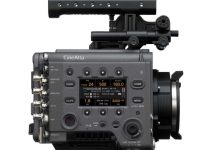If you’re on the Windows’ side of the force, there are chances you’ve already been eyeing some of that gamer goodness to up your editing game. More often than not, the higher-end consumer-grade configurations are, in fact, aimed at gaming enthusiasts, and are thus sporting RGB LEDs, vibrant and colorful designs and schemes.
But if you are able to set aside the aesthetics and the ability to actually game properly, you are going to be able to rig a powerful editing machine keeping the budget quite feasible. Now, when it’s time to get your hand dirty tough, there’s one person you can trust, and that’s Linus Sebastian at Linus Tech Tips. So, let’s take a look at his configuration guide for a budget 4K editing PC.
To start off, here are all the components you’ll need for this build:
- Fractal Design Focus G Mid-Tower Case (Amazon)
- AMD Ryzen 5 3600 CPU Processor (B&H, Amazon)
- MSI B450-A PRO ATX Motherboard (B&H, Amazon)
- G.Skill Ripjaws V Series 16 GB DDR4-3200 RAM (Amazon)
- Seagate IronWolf NAS 3 TB Hard Drive (B&H, Amazon)
- Sabrent Rocket Pro NVME 512 GB Drives (Amazon)
- ASUS Geforce GTX 1650 (B&H, Amazon)
- Corsair CXM 650W ATX Power Supply (Amazon)
At the beginning of the video, Linus explains quite well the need for a 4K editing station. It’s not unusual to hear colleagues complaining about the disadvantages of shooting in 4K since it’s too taxing in terms of memory cards, disk space, and computing power.
Now assuming that a business needs to invest in order to produce money, you may even settle for a slower proxy workflow if you can’t afford a new system, but the advantages of working on a higher resolution than the intended delivery format are clear. Easier VFX, reframing, higher detail when downscaling. In short, it’s worth it.
As Linus points out, any modern computer can render 4K files, all you need is patience. But if you want to have a smooth experience, then you need to get an adequate system: the heart of it will be the Ryzen 5 3600, a six-core monster with enough power to chomp through any codec you throw at it, while not putting a dent big enough to bankrupt you in your wallet.
The third generation of Ryzen chips confirms what we already knew about the platform: it loves fast RAM. The so-called Infinity Fabric will benefit greatly from high-speed sticks. 16GB is the bare minimum for 4K editing, but you should consider powering up to a 32GB configuration in case of more complex timelines.
To hold everything together the motherboard is a tough choice. Availablity for third-gen compatible new chipsets is spotty, to say the least, so you have to make do with what’ you’ve got. Linus chose an MSI B-450 motherboard a solid choice good for the task.
The graphic compartment is a Team green exclusive. Nvidia is still beating AMD in the game, and even though a high-end GPU is not strictly needed to operate and editing suite, it’s still better to go for the best bang for the buck, since a lot of effects are GPU accelerated, we’re talking of your Lumetri Color, Denoisers and similar.
Linus and his group have chosen a GTX 1650, its computing power is more than enough for a normal video editing rig. In case you are aiming for more graphic-intensive tasks, like 3D rendering, animations, and heavy color grading, you could consider upgrading the GPU of choice.
On the storage side of things, it gets easy: an NVME SSD is the only reasonable choice in 2020, a big enough disk will act as a system disk and a scratch disk as well, while a couple of beefier and cheaper traditional drives can hold all of your footage.
In case you are wondering what should be the capacity of the storage, well, it depends on the kind of projects you are working on, but you can get a rough total by evaluating how many hours of footage you plan on storing on the computer.
That said, we have the usual finishing touches, it’s worth remembering that even if not so shiny as the CPU or the GPU, these last components should not be overlooked. A chain is just as strong as its weaker link, and you’re just an electrical surge away from disaster if you cut corners on PSU or similar components.
If you need to cut down the budget you may opt for a non-modular PSU that maybe not as pleasant in aesthetics and cable management, but will still offer plenty of uptime.
So that’s it, a grand total that is just shy of a thousand bucks for an excellent production rig to get your 4K game up and going in no time. If you’re worried about the actual building project, don’t worry, there are a lot of build guides all around the web that can help you assemble your first computer.
[source: LinusTechTips]
Disclaimer: As an Amazon Associate partner and participant in B&H and Adorama Affiliate programmes, we earn a small comission from each purchase made through the affiliate links listed above at no additional cost to you.
Claim your copy of DAVINCI RESOLVE - SIMPLIFIED COURSE with 50% off! Get Instant Access!





